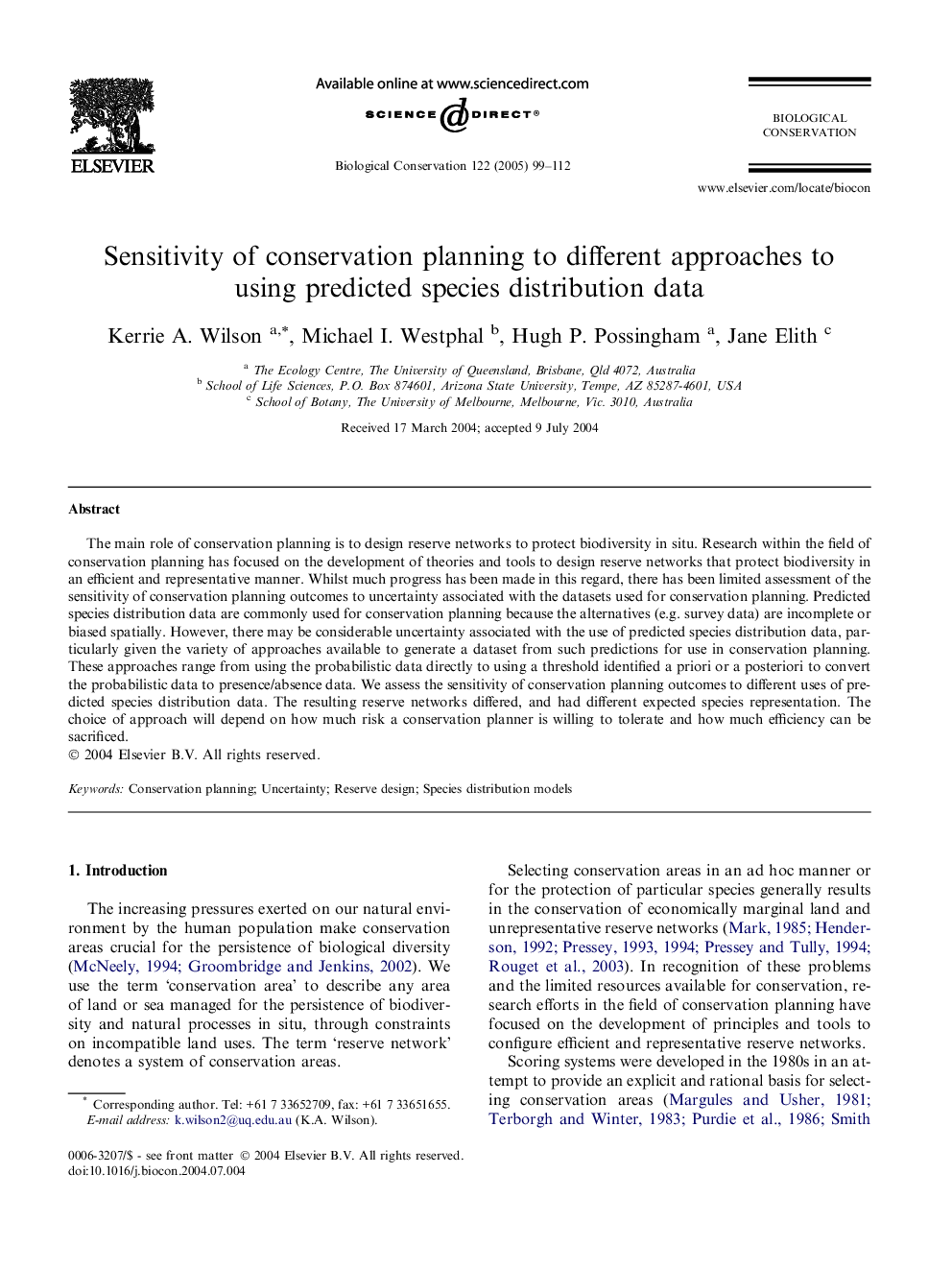| Article ID | Journal | Published Year | Pages | File Type |
|---|---|---|---|---|
| 9446272 | Biological Conservation | 2005 | 14 Pages |
Abstract
The main role of conservation planning is to design reserve networks to protect biodiversity in situ. Research within the field of conservation planning has focused on the development of theories and tools to design reserve networks that protect biodiversity in an efficient and representative manner. Whilst much progress has been made in this regard, there has been limited assessment of the sensitivity of conservation planning outcomes to uncertainty associated with the datasets used for conservation planning. Predicted species distribution data are commonly used for conservation planning because the alternatives (e.g. survey data) are incomplete or biased spatially. However, there may be considerable uncertainty associated with the use of predicted species distribution data, particularly given the variety of approaches available to generate a dataset from such predictions for use in conservation planning. These approaches range from using the probabilistic data directly to using a threshold identified a priori or a posteriori to convert the probabilistic data to presence/absence data. We assess the sensitivity of conservation planning outcomes to different uses of predicted species distribution data. The resulting reserve networks differed, and had different expected species representation. The choice of approach will depend on how much risk a conservation planner is willing to tolerate and how much efficiency can be sacrificed.
Related Topics
Life Sciences
Agricultural and Biological Sciences
Ecology, Evolution, Behavior and Systematics
Authors
Kerrie A. Wilson, Michael I. Westphal, Hugh P. Possingham, Jane Elith,
